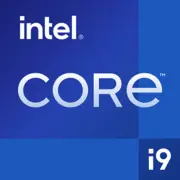Intel Core i9-9900KS

Intel Core i9-9900KS in 2025: Is It Worth Considering?
Introduction
Despite being released in 2019, the Intel Core i9-9900KS continues to attract the attention of enthusiasts and users looking for budget solutions for specific tasks in 2025. This processor, based on the Coffee Lake architecture, remains relevant due to its unique performance. Let’s find out who it might be suitable for today and what pitfalls should be taken into account.
Key Specifications: Old but Powerful Hardware
Architecture and Process Technology
The processor is built on the Coffee Lake Refresh architecture (14 nm++), which appears outdated in 2025 compared to AMD and Intel’s 5-7 nm chips. However, the 14 nm process has allowed Intel to maximize the potential of this tried-and-true technology: 8 cores, 16 threads, a base frequency of 4.0 GHz, and a turbo boost up to 5.0 GHz across all cores. This makes it one of the fastest processors of its generation for single-threaded tasks.
Key Features
- High Clock Speed: Even in 2025, 5.0 GHz is a respectable figure for gaming and applications sensitive to IPC (instructions per clock).
- Overclocking Potential: With good cooling, some units can be overclocked to 5.2 GHz.
- Intel UHD Graphics 630: Integrated graphics suitable for office tasks or as a backup display output.
- L3 Cache 16 MB: Sufficient to minimize latency in games and productivity applications.
Performance
According to Geekbench 6 (2025):
- Single-Core: 1766 — comparable to Ryzen 5 7600X (1800-1850).
- Multi-Core: 8607 — falls short against modern 8-core processors (for example, the Core i5-13600K scores around ~12000).
Compatible Motherboards: Looking on the Secondary Market
Socket and Chipsets
The processor uses the LGA 1151 v2 socket, compatible only with 300-series chipsets:
- Z390: The best choice for overclocking (XMP support, improved VRM). Examples: ASUS ROG Maximus XI Hero (price in 2025: $150-200 for new leftovers).
- H370/B365: Suitable for basic builds without overclocking.
Selection Features
- BIOS: Ensure that the motherboard supports the 9th generation CPUs (BIOS version P4.20 and above is required for ASUS).
- VRM: For stable overclocking, choose boards with 8+ power phases (e.g., MSI Z390-A Pro).
Memory: DDR4 as a Budget Option
The processor officially supports DDR4-2666 MHz, but most Z390 boards allow memory overclocking to 3200-3600 MHz. In 2025, DDR4 is significantly cheaper than DDR5: a 32 GB kit (2x16) of DDR4-3200 costs $70-90 (Corsair Vengeance LPX), while a similar volume of DDR5-5200 costs $120-150.
Recommendations:
- For gaming: 16-32 GB DDR4-3200 with CL16 timings.
- For work: 32-64 GB DDR4-3600 (if the motherboard supports it).
Power Supply: Weighing the Watts
Processor TDP is 127 W, but power consumption can reach 200 W when overclocked. Considering the graphics card (for example, RTX 4070 with a TDP of 200 W), the minimum power supply wattage required is 650 W.
Examples:
- Corsair RM650x (80+ Gold): $90-110.
- be quiet! Straight Power 11 750W: $120.
Tips:
- Don't skimp on the power supply: cheap models may not perform reliably under peak loads.
- If planning to upgrade to a more powerful graphics card, choose a power supply with a margin (750-850 W).
Pros and Cons: Weighing the Risks
Pros:
- High single-threaded performance — relevant for older games (e.g., CS:2, World of Warcraft).
- Affordable price: $250-300 for a new processor (remaining stock).
- Compatibility with cheap DDR4.
Cons:
- Lack of PCIe 4.0/5.0 — NVMe drives are limited to 3.0 speeds (up to 3500 MB/s).
- High power consumption — electricity bills will be higher compared to Ryzen 7000.
- No support for new AVX-512 instructions.
Use Cases: Where Is the 9900KS Still Relevant?
1. Gaming: In titles where frequency matters more than multithreading (e.g., Dota 2, GTA V). With RTX 4060 at Full HD, expect 140+ FPS.
2. Work Tasks: Video editing in Premiere Pro, 3D rendering in Blender (but rendering will be 20-30% slower than with Ryzen 7 7700X).
3. Home Server: Thanks to its 8 cores and stability, the processor is suitable for virtualization and hosting.
Comparison with Competitors
- AMD Ryzen 7 5800X3D ($300): Better for gaming (thanks to 3D V-Cache), but more expensive and requires an AM4 motherboard.
- Intel Core i5-13600K ($280): 14 cores (6P+8E), supports DDR5 and PCIe 5.0 — a clear favorite for 2025.
- Ryzen 5 7600X ($220): Newer, but has 6 cores versus 8.
Conclusion: The 9900KS falls short in multithreading but excels in price for those who already have an LGA 1151 platform.
Practical Assembly Tips
1. Cooling: Use an AIO cooler (e.g., Arctic Liquid Freezer II 240) or a tower cooler (Noctua NH-D15).
2. Case: Choose models with good ventilation (Lian Li Lancool 216).
3. Drives: Samsung 970 Evo Plus (PCIe 3.0) is an optimal choice without overpaying for PCIe 4.0.
Final Conclusion: Who Should Consider the i9-9900KS in 2025?
This processor is worth considering in two scenarios:
1. Upgrading an Old System: If you already have a Z390 motherboard and DDR4, the 9900KS will provide a performance boost without needing to replace the platform.
2. Budget Gaming Build: When you need to save on the processor to invest in a graphics card.
However, for new builds, it’s better to choose modern platforms (AM5 or LGA 1700) to avoid limiting future upgrades. The Intel Core i9-9900KS in 2025 is a niche solution for those who value the balance of price and performance for specific tasks.
Basic
CPU Specifications
Memory Specifications
GPU Specifications
Miscellaneous
Benchmarks
Compared to Other CPU
Share in social media
Or Link To Us
<a href="https://cputronic.com/cpu/intel-core-i9-9900ks" target="_blank">Intel Core i9-9900KS</a>